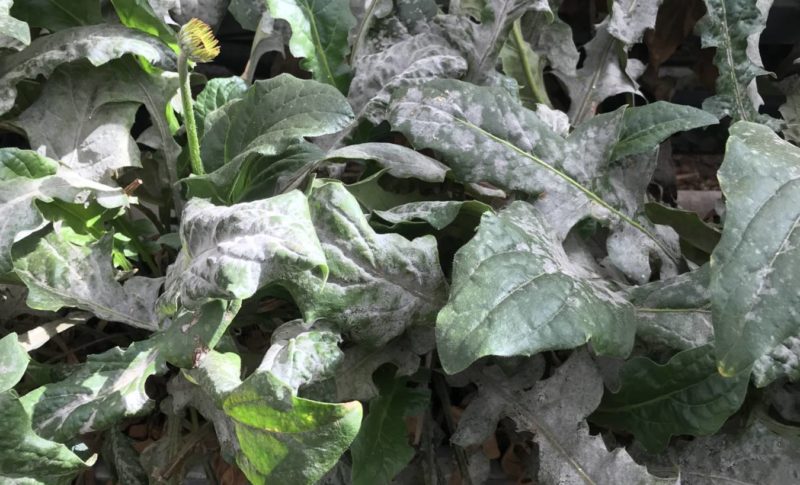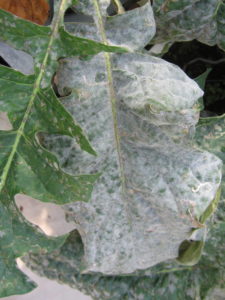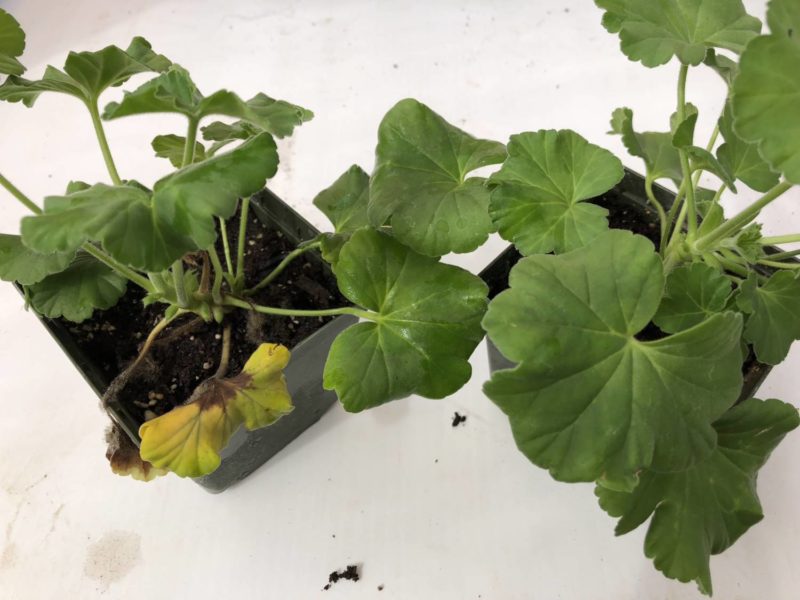
Designing the Most Effective Fungicide Rotation
Fungicides play a vital role in preventing and controlling plant diseases. They are the medicine that helps keep our plants healthy and salable. Since we don’t have ideal growing conditions at times, use of fungicides becomes an important part of our plant production schemes.
When it comes to fungicides, some growers are reluctant to make changes or apply anything new — and rightfully so, as there is a zero tolerance for plant damage. Others are game to try every new product that comes on the market. Regardless of your attitude toward new products, the potential for phytotoxicity makes reading and understanding the manufacturers label critically important. Most fungicide manufacturers have completed extensive trials evaluating the product on ornamental plants and include detailed instructions on how best to apply the product, including restrictions. If the label does not address your application needs, then it’s highly recommended to conduct a trial under your specific conditions before application.

Major fungicide manufacturers/distributors (such as Bayer, Syngenta, BASF and OHP) will stand behind the performance of their products, but they cannot support an off-label application. The label is the law, so it’s always worth investing the extra time to review the product label to ensure it can be applied legally and that it addresses the pathogen or disease in question. Application rates and intervals should be strictly followed, as they have been evaluated and proven effective through extensive research conducted by the manufacturer and University researchers. Application timing is also critical, as some products may not provide curative activity and will only be effective when applied preventatively (before the onset of disease). If you have trouble interpreting a fungicide label, ask for help. University Extension people, manufacturer technical staff and private consultants can each help with your questions.
Even the best new products can be ineffective if you do not alternate their use with products in a different MOA group. It is the basis of a good resistance management program which prolongs the use of these products. These MOA groups are also called FRAC groups, referring to the information compiled by the Fungicide Resistance Action Committee to help with rotation choices (see www.FRAC.com). Some of the rotation decisions are being dictated now. Requirements are showing up on fungicide labels in the form of maximum applications per crop (sometimes only two are allowed), or in a restriction on how many applications may be made before switching to another MOA group. There are even requirements to tank-mix different MOA groups (check out the Adorn and Subdue MAXX labels — the Subdue MAXX restrictions relate to downy mildew only).
SIMPLER ROTATIONS ARE THE BEST
Research on agronomic crops has shown that both rotation and tank-mixing are effective means of limiting resistance development. Using tank-mixes may be attractive to any grower but you cannot decrease the rate by putting two products in a tank. If you do use tank-mixes for resistance management, you end up increasing your spray costs. Aaron and I are each asked for the “ideal” number of products a grower should rotate in order to achieve protection from fungicide resistance. Sometimes growers’ protocols show a different product every week and the list goes for more than eight weeks without a repeat. This seems like overkill! We think the perfect number of products in a rotation is two or three. Using more than three pretty much ensures that you will not know which ones worked, which ones failed, or which one hurt your crop.
If there are too many products being used, it’s hard to tell what the weak links are in the program. When you follow the label on some products, e.g., a strobilurin such as Heritage, you are limited in how many times you can use the product before rotating to a product with another mode of action. It becomes even more of a chess game when you keep reading the label and realize that you can only use a product eight times per season. In some cases, this will mean that a strobilurin material with a different active ingredient will need to be used after those eight treatments are up. But be sure the product does not say rotate to another MOA group. In this case, switching to another strobilurin will mean you are off label. The amount of product per acre per year can also be a limitation in some circumstances.
ROTATING PRE-MIX FUNGICIDES
One of the best ways to manage a variety of foliar diseases is to rotate between pre-mix fungicides — but only if they have no FRAC groups in common. For instance, a rotation of Broadform (FRACs 7 and 11) with Palladium (FRACs 9 and 12) would give control of many foliar diseases and minimize potential for resistance. Another excellent rotation that would be appropriate for nurseries is Orkestra Intrinsic (FRACs 7 and 11) alternated with Concert II (FRACs M5 and 3). Many of these combinations can act as resistance management tools in their own right. That would be the case for Broadform where both active ingredients target fungi like Botrytis and Alternaria. In contrast, Palladium only has one active ingredient that targets powdery mildew.

In the case of soil-borne diseases, most of the pre-mixes consist of different active ingredients that target different groups of fungi. For instance, Banrot (thiophanate methyl and etridiazole) covers Pythium, Phytophthora, Rhizoctonia and Thielaviopsis. Therefore, they do not act in resistance management unless you rotate with another product like Empress Intrinsic, which is in a different FRAC group and is effective on many soil-borne fungi.
CONSTRUCTING A SUCCESSFUL PROGRAM
The specifics of rotation choice depend entirely upon what crop you are growing. For any crop, a grower needs a list of what diseases could be a problem. For some diseases, a preventive program based on a calendar will make sense. In other cases, if the disease is exceptionally hard to control, preventative applications may be the only choice. In prevention mode, you may be tempted to treat with a less expensive material first. However, research done by Mike Matheron (University of Arizona) on controlling powdery mildew on cantaloupes verifies this “use the big guns” approach. He compared using highly efficacious products and rather poorly effective products in rotation with one another. He actually found that skipping a spray was better than alternating with a product that provided poor control. We both agree that it’s best to use the most effective products to avoid this issue.
Here are some things to consider when designing a fungicide rotation program:
What disease(s) are you targeting? Guessing wrong costs you a lot of money. Get a lab ID if you do not recognize the disease.
What products work best? Don’t simply read labels; seek out unbiased recommendations when possible.
What is safe on your crop(s)? Sometimes the only way to know this is to do a trial yourself. Remember to keep some untreated plants of exactly the same age, cultivar and growing condition as controls for a comparison.
How long does the treatment last? Make sure you don’t retreat more often than necessary. This is a waste of money and can lead to crop damage.
Alternating biologicals and conventional? Does the conventional product kill the biological? Using a copper in rotation with Cease is acceptable since the biocontrol bacterium in Cease is very copper tolerant. In contrast, using a
Terraguard drench after a RootShield application can end up killing the Trichoderma in the RootShield.
Are there possible interactions with other products in the rotation? Aliette and copper. A pH change (Aliette has a pH of 3.5) leads to copper toxicity by making more of the chopper available. This won’t be a problem as long as there is a two-week interval between the two products. And it does not matter which one is applied first.


 Video Library
Video Library 




















